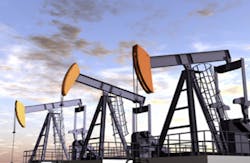PIRA attributes some of the growth in U.S. production to shale oil, and there is no doubt that shale oil production is increasing. However, it is not clear where PIRA is getting its data. The most widely accepted source for data on world oil production is the Energy Information Administration (EIA), and EIA data tells a somewhat different picture.
The PIRA claim goes on to cite projected figures for 2013. This has to be a projection, since 2013 is not over yet, so the most reliable numbers are the EIA numbers for 2012, which are actual rather than projected. The EIA distinguishes crude oil production from what it calls total oil production, and its numbers for 2012 are as follows:
| Petroleum Type | United States | Saudi Arabia |
| Crude Oil Production – 2012 | 6,486 thousand barrels/day | 9,832 thousand barrels/day |
| Total Oil Production – 2012 | 11,114 thousand barrels/day | 11,725 thousand barrels/day |
| Proved Reserves – 2012 | 26.654 billion barrels | 267.91 billion barrels |
It is important to understand what the above numbers mean. In terms of crude oil production, the United States is nowhere near Saudi Arabia. The only way to get the United States close to Saudi Arabia is by considering total oil production numbers. Total oil production includes crude oil and condensate, plus natural gas liquids and refinery gain.
Natural gas liquids are liquids that are separated at natural gas processing, fractionating, and cycling plants. Examples include liquefied petroleum gases such as ethane, propane, and butane. It is well known that the United States outranks Saudi Arabia in natural gas production by a substantial amount, although the United States has natural gas reserves that are modestly higher than those of Saudi Arabia. Saudi Arabia doesn’t need to produce a lot of natural gas because it has so much oil. So naturally, if you include liquids that are separated out at natural gas processing plants, this would help the oil total of the U.S. when compared to Saudi Arabia.
READ ALSO: Energy Energizes the Technology Marketplace
Refinery gain refers to the additional volume of refined product that exists after refining and distillation, when this amount is measured volumetrically rather than as mass. The process of catalytic cracking breaks some large molecules into smaller ones, resulting in a slightly greater volume of petroleum fluid than was fed into the refining process. This may create a greater volume of fluid, but the mass of the fluid remains the same. This is not creating more oil; rather, it is creating slightly more refined fuel, measured in volumetric terms.
Counting refinery gain as part of total oil production also favors the United States, since the United States has many more refineries and has more than eight times the refinery capacity than Saudi Arabia. Furthermore, this is not “oil production,” it is production of refined fuels that are created from oil that has already been produced. It is also dependent on measuring it volumetrically rather than in mass terms.
What is most objectionable in PIRA’s analysis is counting biofuels as oil. Biofuels are made from plant matter and municipal and industrial waste. Biofuels aren’t oil, they are a substitute for oil. Yet PIRA counts 1 million barrels per day of biofuels as part of U.S. oil production.
The problem with PIRA’s analysis is that when people think of oil production, they think of crude oil production. They are not thinking about refinery gains, biofuels, or even natural gas liquids. And the United States is a long way from overtaking Saudi Arabia in crude oil production. Of course, PIRA doesn’t mention reserves because this would work against its analysis. Saudi Arabia has more than 10 times the proved oil reserves as the United States.
Jesse Yoder, Ph.D., is president of Flow Research Inc. in Wakefield, Mass., a company he founded in 1998. He has 25 years of experience as an analyst and writer in process control. Dr. Yoder specializes in flowmeters and other field devices, including pressure and temperature products. Dr. Yoder can be reached at [email protected].
For more information on Flow Research’s work in the area of oil flow measurement, visit OilFlows.com.



